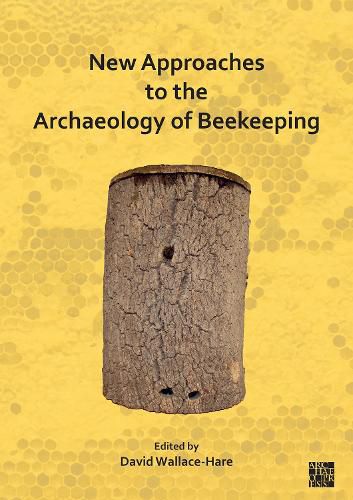Readings Newsletter
Become a Readings Member to make your shopping experience even easier.
Sign in or sign up for free!
You’re not far away from qualifying for FREE standard shipping within Australia
You’ve qualified for FREE standard shipping within Australia
The cart is loading…






New Approaches to the Archaeology of Beekeeping aims to take a holistic view of beekeeping archaeology (including honey, wax, and associated products, hive construction, and participants in this trade) in one large interconnected geographic region, the Mediterranean, central Europe, and the Atlantic Facade. Current interest in beekeeping is growing because of the precipitous decline of bees worldwide and the disastrous effect it portends for global agriculture. As a result, all aspects of beekeeping in all historical periods are coming under closer scrutiny. The volume focuses on novel approaches to historical beekeeping but also offers new applications of more established ways of treating apicultural material from the past. It is also keenly interested in helping readers navigate the challenges inherent in studying beekeeping historically. The volume brings together scholars working on ancient, medieval, early modern, and ethnographic evidence of beekeeping from a variety of perspectives. In this sense it will serve as a handbook for current researchers in this field and for those who wish to undertake research into the archaeology of beekeeping.
$9.00 standard shipping within Australia
FREE standard shipping within Australia for orders over $100.00
Express & International shipping calculated at checkout
New Approaches to the Archaeology of Beekeeping aims to take a holistic view of beekeeping archaeology (including honey, wax, and associated products, hive construction, and participants in this trade) in one large interconnected geographic region, the Mediterranean, central Europe, and the Atlantic Facade. Current interest in beekeeping is growing because of the precipitous decline of bees worldwide and the disastrous effect it portends for global agriculture. As a result, all aspects of beekeeping in all historical periods are coming under closer scrutiny. The volume focuses on novel approaches to historical beekeeping but also offers new applications of more established ways of treating apicultural material from the past. It is also keenly interested in helping readers navigate the challenges inherent in studying beekeeping historically. The volume brings together scholars working on ancient, medieval, early modern, and ethnographic evidence of beekeeping from a variety of perspectives. In this sense it will serve as a handbook for current researchers in this field and for those who wish to undertake research into the archaeology of beekeeping.